6 Best HealthTech Trends To Follow in 2025

Lead Business Analyst at TechMagic, with a background in Project Management and QA, mentor, and speaker. Passionate about Business Analysis and Product Design.

In this piece, we are focusing on five trends in Health Tech that are likely to be the most dynamic and the most attractive for investors in 2024.
While we are living through one of the worst possible scenarios — the worldwide pandemic — it seems high time for healthcare technologies to be invented, evolved, and implemented.
According to the 2021 Future of Healthcare Report, almost 80% of healthcare technology systems plan to increase their investments over the next five years. The list of best innovations of 2021 by TIME includes 25 health-related technologies.
6 Main Healthcare Tech Trends
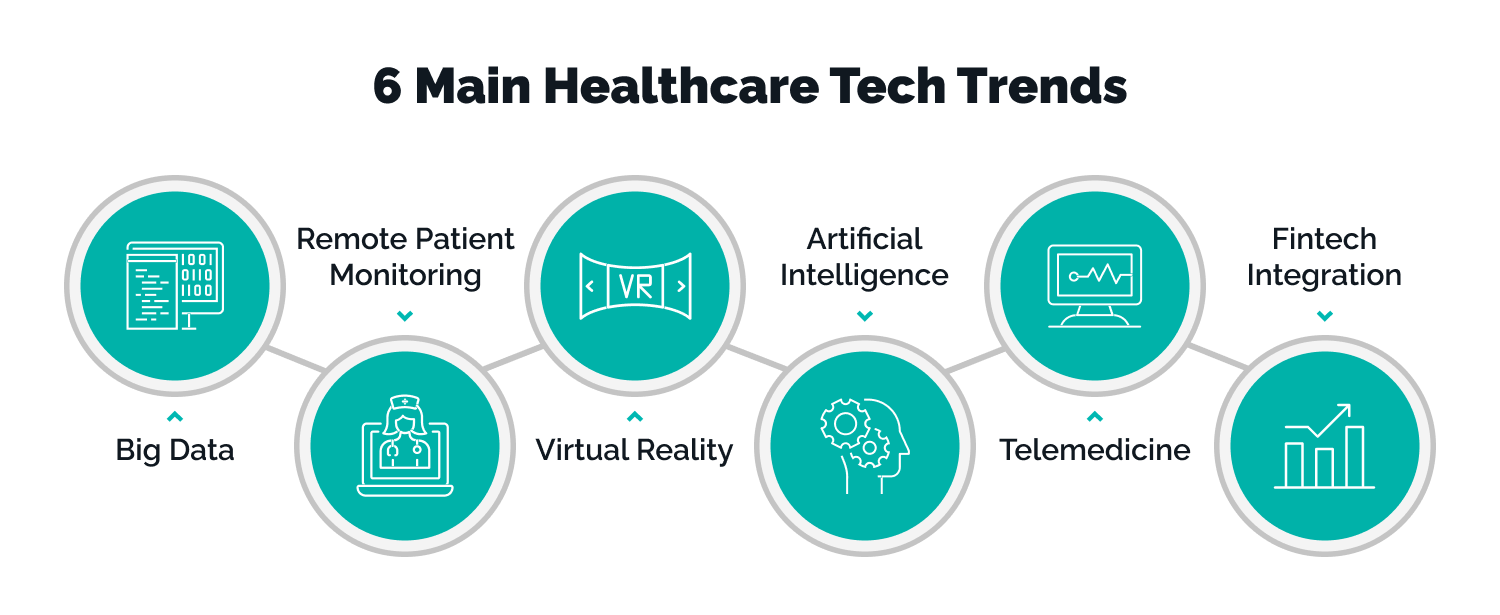
Big Data
Big Data opens the list of the biggest health tech trends, making the implementation of numerous other health tech trends possible. Big data refers to the storage, processing, and handling of extensive amounts of patient data. Its use can be very different: from assigning a unique treatment plan to each patient and tracking the dynamics of their condition to preventing epidemics, optimizing costs, enhancing the work of separate branches and the healthcare system as a whole.
This trend is transforming the entire system. It makes it possible to use devices and apps to monitor patients remotely and reduce the load on hospitals and medical staff.
International Data Corporation reports that the Big Data analytics segment will be worth around $68.03 billion by 2024.
Virtual Reality
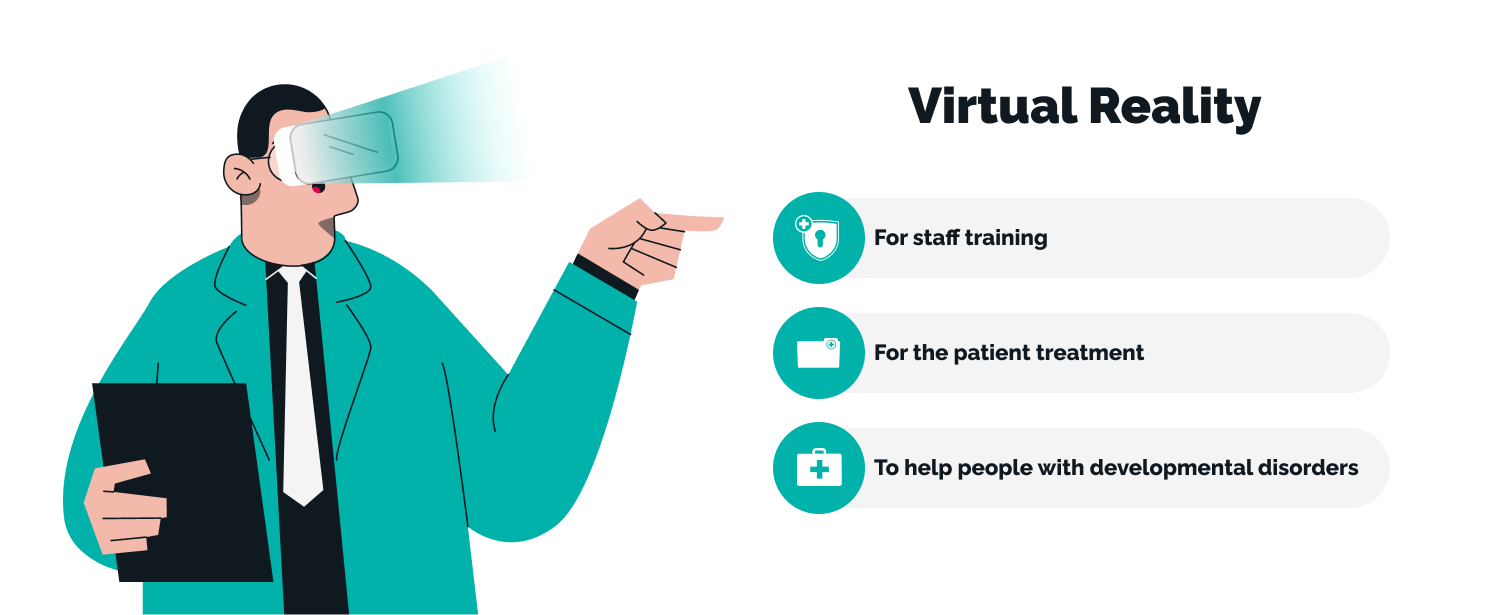
The use of virtual reality is one of the new trends in healthcare technology, but the dynamics of this direction are very optimistic. Today we can identify four main areas the VR is used for healthcare:
For staff training
Students, interns, and medical specialists learn to manipulate and practice in virtual reality. They get an outstanding possibility to study anatomy with VR and gain a full range of practical knowledge.
For the patient treatment
Surgeons, particularly neurosurgeons, use VR devices to simulate operations and reduce the risk of errors and problems when it comes to actual surgery. They are the most prepared for complicated operations.
To help people with developmental disorders
These VR devices help people with disorders and phobias to adapt to life and socialize. In this way, they get prepared for contact with the real world in virtual reality. Devices can't replace traditional therapy but enhance it impressively.
A great example is Psious, a virtual reality program that helps people overcome their fears. It works as an adjunct to therapy. The restigious institutions in over 70 countries use it. With Psious, people effectively get rid of the fear of crowds, flights, and heights, overcome anxiety, and learn the technique of mindfulness.
Technology trends in healthcare for the following years are focused on mental health and information sharing, not only on maintaining physical conditions. As the World Health Organization named it, the infodemic — is spreading fake information on COVID. It turned out to be a significant obstacle on the vaccination company path.
FinTech Integration
Integrating FinTech tools into healthcare systems is a growing trend today. It promises streamlined, efficient services while helping to reduce healthcare costs. By using FinTech, healthcare teams can improve their processes and provide better patient care.
As more Health IT organisations look to FinTech integration to improve service delivery and access the most up-to-date information from any location with internet access, the benefits are becoming increasingly evident. In addition to reduced cost and improved efficiency, it makes data sharing easier across departments and with external organisations like insurance companies, leading to improved accuracy and speed of diagnosis.
Insurance, management services, digital payments, settlement services, capital-raising, deposits, and credit services are all covered by financial technology. Fintech supports the healthcare sector by reducing inefficiencies in its payment plans using P2P lending, mobile payments and blockchain technology.
Remote Patient Monitoring
RPM is one of the healthcare technology trends developing the most in recent years. It will undoubtedly continue to grow even after the COVID pandemic if it's safe to talk about its potential ending.
The primary purpose of these systems is to collect and analyze the information about a patient's condition without visiting brick and mortar hospitals, involve medical personnel, and make tests. In simple words, they help to keep a finger on the pulse, sometimes literally.
It's estimated that more than 30 million patients will use remote monitoring systems by 2024. By 2027 the global market will be worth over $1.7b — up more than 125% of what it currently represents.
These systems are kits with wearable devices that clinics provide to patients. Depending on their purpose, they monitor and manage multiple processes: breathing, heartbeat, sugar level, activity level, sleep, etc. They remind patients to take medication or insulin injections, monitor sleep breathing to prevent asthma attacks, or produce a round-the-clock measurement of critical health data and transmit it to the hospital system.
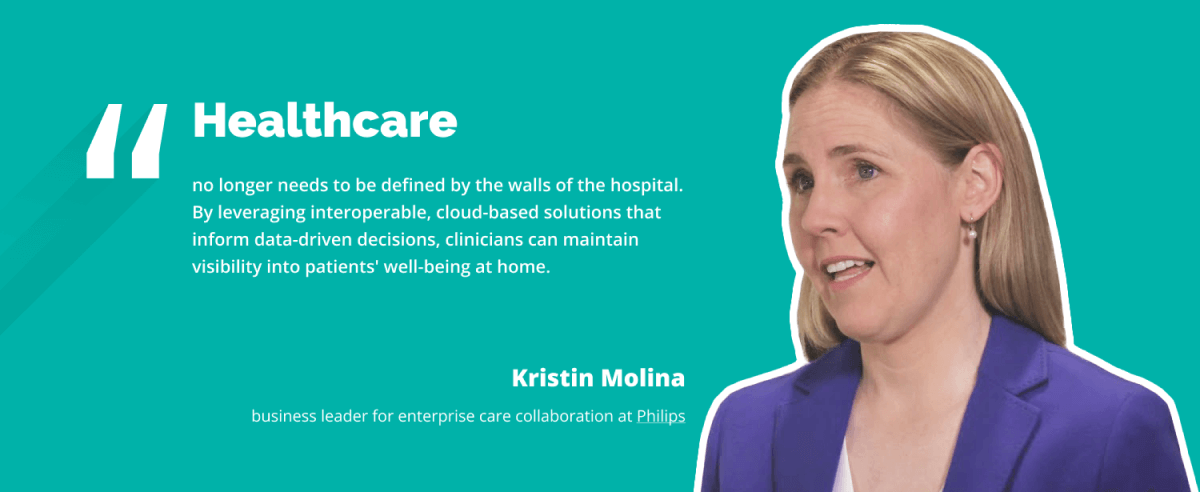
A McKinsey survey from May 2021 found that 22% of nurses indicated they might leave their current position providing direct patient care within the following year. In comparison, that rate was 15.9% in 2019. It'll be fair to assume the wearable health monitoring systems impact this number.
Today's devices can partially or entirely replace regular communication with doctors, reducing stress on frontline clinicians and overall costs compared to traditional patient monitoring techniques.
Artificial Intelligence
The term AI for healthcare is described as "when computers and other machines mimic human cognition, and are capable of learning, thinking, and making decisions or taking actions. AI in healthcare, then, is the use of machines to analyze and act on medical data, usually with the goal of predicting a particular outcome."
Publicis Health Media president Andrea Palmer believes that the best is yet to come — and in the nearest future. That's what she says on this subject:
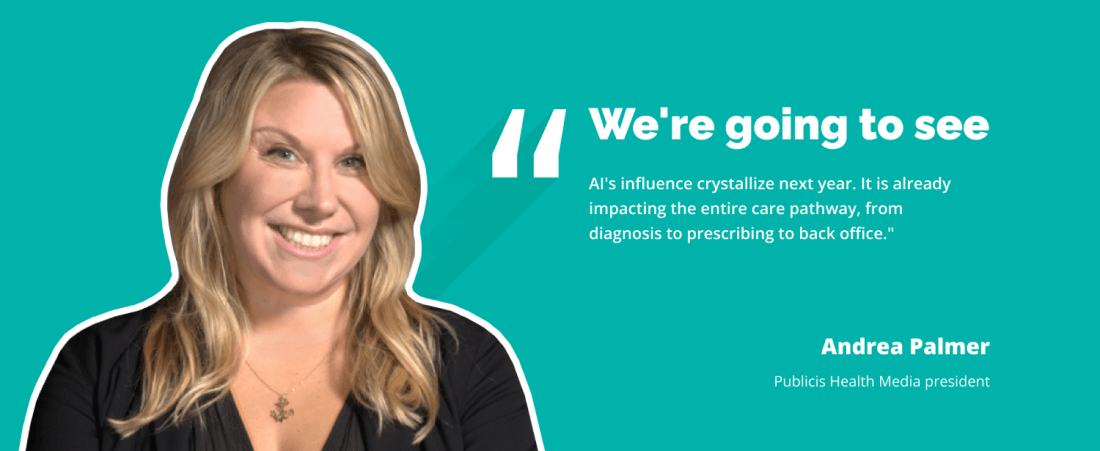
Undoubtedly, as tech giants such as Microsoft invest in the future trends in healthcare technology, we'll likely see AI as an infrastructure to maximize efficiencies and a B2C communications tool with great potential to improve work with patients.
The global artificial intelligence in the healthcare market was valued at $6.7 billion in 2020. It's expected to expand at an annual growth rate of 41.8% from 2021 to 2028.
Telemedicine
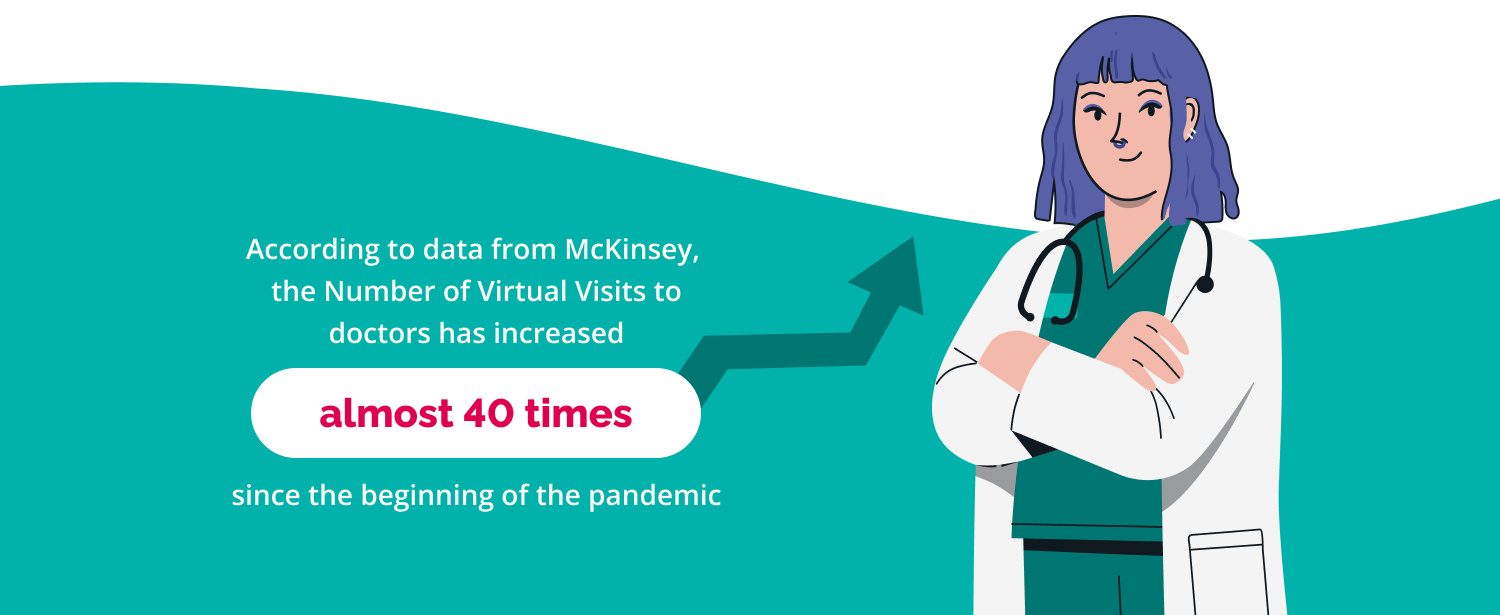
Most of these interactions have been centered around acute care, but there has also been a rapid increase in chronic disease. It is expected that telemedicine will play a massive role for people with diabetes.
Another healthcare technology industry that looks promising is cardiology. Today, someone in the U.S. has a heart attack every 40 seconds. Remote monitoring of the patient's condition and timely consultation with a doctor can save thousands of lives and significantly reduce costs. If we talk about the United States, heart disease costs the country about $219 billion a year.
Telehealth offers a convenient, cost-effective way to diagnose and treat cardiovascular disease. For instance, with telehealth, even patients in remote or rural areas can access cardiologists to get treatment without traveling far.
The McKinsey survey found that more than 40% of frontline nurses have delivered care virtually within the last year, and roughly two-thirds of frontline nurses are interested in providing virtual care in the future.
Best Buy acquired an at-home tech care startup named Current Health. Amazon introduced Alexa Together, a subscription service designed to help families with elderly patients at home.
Bottom Line
HealthTech is a rapidly developing area. In 2023 and following years, existing technologies will improve, become more patient-centered and focus on smoothing the work of hospitals and private practices.
And this area isn't filled. HealthTech trends and remarkable digital systems appear here and there, but there's still enough room for creativity and implementation of the boldest ideas and technological innovations.
Implement those trends today with healthcare software development company to be at the top tomorrow.



 Software Development
Software Development
 Security Services
Security Services
 Cloud Services
Cloud Services
 Other Services
Other Services
















 TechMagic Academy
TechMagic Academy
 linkedin
linkedin
 facebook
facebook
 twitter
twitter






















